1960s
Chicken Fat
Posted By: Paul - Sun Jan 05, 2020 -
Comments (9)
Category: Body, Bodybuilding, Music, 1960s, Cacophony, Dissonance, White Noise and Other Sonic Assaults
Follies of the Madmen #459
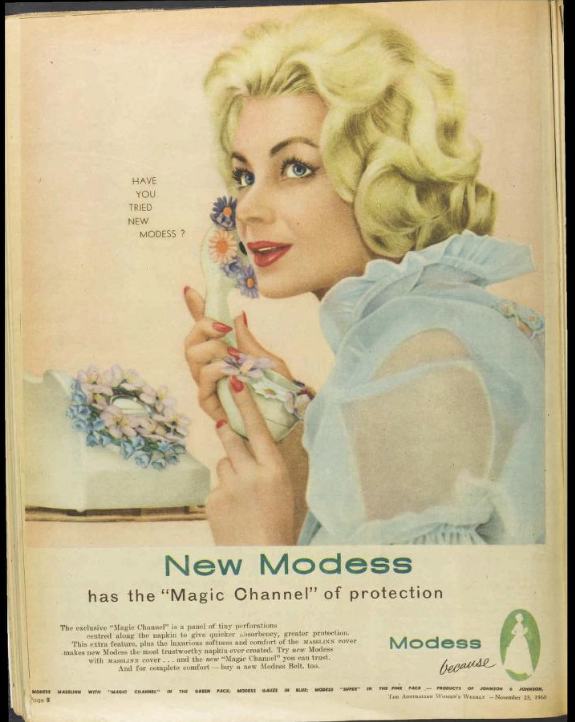
Sanitary pad endows woman with power to make flowers sprout from inanimate objects.
Source.
Posted By: Paul - Tue Dec 31, 2019 -
Comments (2)
Category: Body, Genitals, Business, Advertising, Hygiene, Body Fluids, Magic and Illusions and Sleight of Hand, 1960s
Percy the Fainting Pigeon
Percy was a prize-winning racing pigeon with an odd habit:No matter where he is or where you put him, Percy keeps up the pose. On the top of the television, on the rim of the cup he won at the Royal Welsh Show, or tossed in the air, he holds it.
Even putting him on the floor next to Suzie the cat doesn’t cause a twitch.
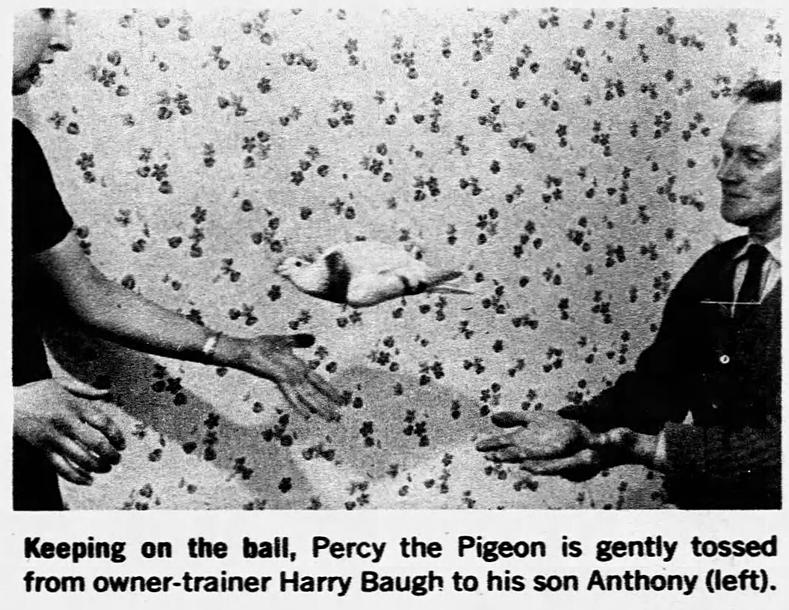
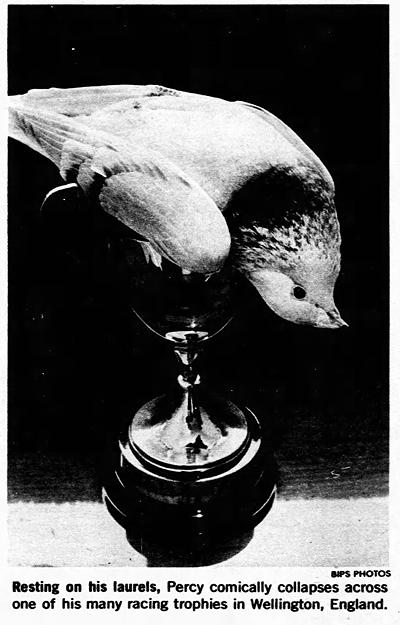
New York Daily News - Jan 19, 1969
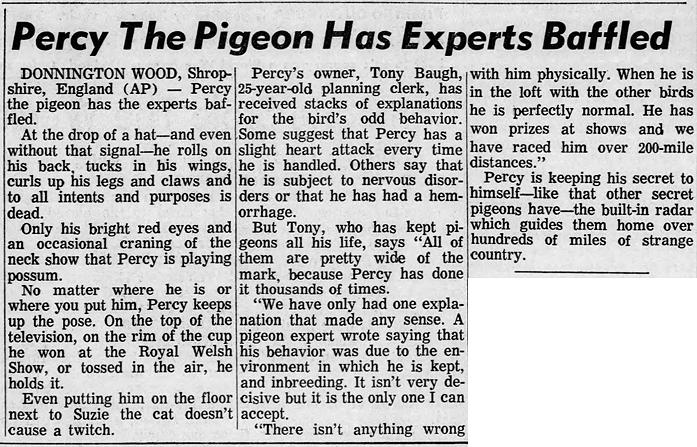
The Jackson Sun - Apr 10, 1968
Posted By: Alex - Fri Dec 27, 2019 -
Comments (4)
Category: Animals, 1960s
Follies of the Madmen #458
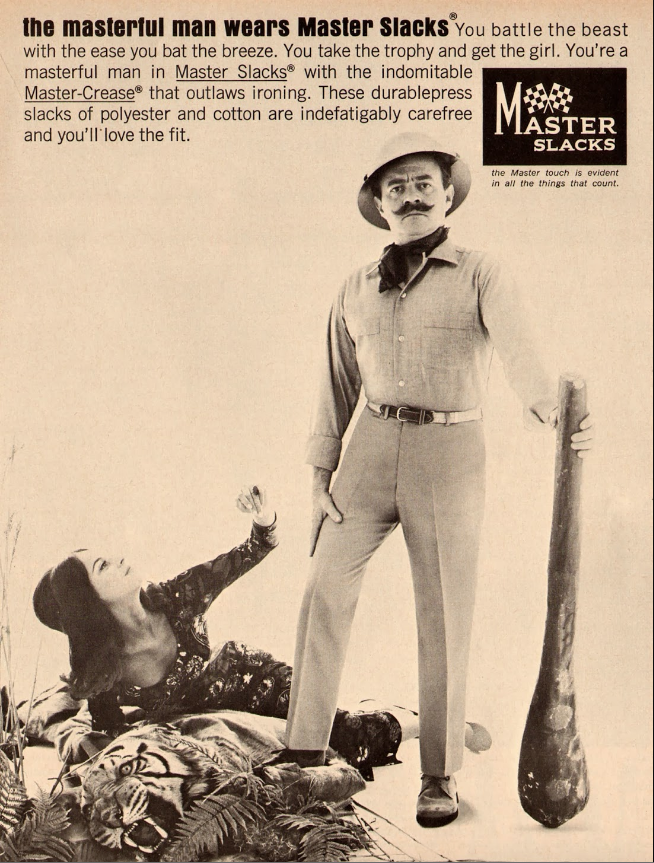
Source.
Posted By: Paul - Thu Dec 26, 2019 -
Comments (3)
Category: Fashion, Stereotypes and Cliches, 1960s, Men, Women
Nancy Sinatra for RC Cola
Nancy tries to escape the all-white dystopia of George Lucas's THX 1138.
Posted By: Paul - Fri Dec 13, 2019 -
Comments (1)
Category: Architecture, Business, Advertising, Surrealism, Soda, Pop, Soft Drinks and other Non-Alcoholic Beverages, 1960s
Shake-a Pudd’n
Recipe for disaster.
Posted By: Paul - Sat Dec 07, 2019 -
Comments (3)
Category: Accidents, Food, Advertising, Children, 1960s, Dance
Occasional Wife
Wikipedia page.
Posted By: Paul - Fri Nov 15, 2019 -
Comments (1)
Category: Business, Confusion, Misunderstanding, and Incomprehension, Customs, Domestic, 1960s, Men, Women
Miss Sasquatch Queen
At the Sasquatch Winter Carnival in Saskatchewan, they annually elected a "Miss Sasquatch Queen." Laura Medland, below, was the 1969 winner. Note the Sasquatch patch she's wearing.
Regina Leader-Post - Feb 25, 1970
And there seems to have been a rival Miss Sasquatch contest: the Sasquatch queen pageant held at the Regina Inn. Dona Doan, below, won that title in 1969.
So, in 1969 there were two Sasquatch Queens in Saskatchewan.

Regina Leader-Post - Feb 17, 1969
Posted By: Alex - Thu Nov 14, 2019 -
Comments (2)
Category: Awards, Prizes, Competitions and Contests, 1960s
The Songbird Saver
Desmond Slattery (1914-1977) claimed to be a naturalist. But I'm not sure how much scientific training he actually had. I suspect that's just how he rebranded himself after his career in Hollywood fizzled.His 'Songbird Saver,' which he debuted in 1968, was designed to stop cats from attacking birds by conditioning them to think that, if they did so, the birds would explode. As explained in the LA Times (Jan 23, 1969):
Slattery's own news release describes its effectiveness perhaps more vividly:
"Slipping out of the house, the trainee-cat will make its stealthily stalking approach... Seeing it (the Songbird Saver), apparently frozen with terror, the trainee-cat will pounce upon it, and with the resulting explosion, that cat will go about 9 feet in the air and take off for the high timber before its feet touch the ground."
It is with this simple device that Slattery hopes to save civilization "as we know it."
"Songbirds are vital to our ecology of life," he explained. "Our society could not exist without them. Frankly, in six years we'd be up to our neck in insects."
Slattery emphasized his device is harmless to cats and uses merely the same sort of exploding caps used in cap pistols. It is based on common theories of preconditioning and some stuff he read by Mark Twain on a cat's ability to learn.
"It's based, actually, on a combination of Pavlov and Mark Twain. If both those guys are wrong, I'm wrong."
The dapper 54-year-old promoter denied he was "anti-cat" and said that in fact his invention would allow cats and birds to live together in harmony.

El Paso Times - Dec 26, 1968


Los Angeles Times - Jan 23, 1969
Posted By: Alex - Wed Nov 13, 2019 -
Comments (0)
Category: Animals, Inventions, Cats, 1960s
Augmented Roman
Augmented Roman was one of the periodic attempts to improve and rationalize the English alphabet. Introduced in the 1960s by Sir James Pitman, the idea was to expand the alphabet from 26 letters to 43, and to have each letter represent a single, distinct sound. Unlike the current alphabet in which letters can have different sounds depending on context.Proponents of Augmented Roman imagined teaching children to read using this improved alphabet, and then having the kids switch over to the standard alphabet later. And that's where the plan ran aground, because most people figured that if kids have to learn the standard alphabet anyway, just teach them that from the beginning.

image source: omnivorenz

Tampa Bay Times - Sep 2, 1962

Tampa Bay Times - Sep 2, 1962
Posted By: Alex - Fri Oct 25, 2019 -
Comments (7)
Category: Education, Languages, 1960s

| Who We Are |
|---|
| Alex Boese Alex is the creator and curator of the Museum of Hoaxes. He's also the author of various weird, non-fiction, science-themed books such as Elephants on Acid and Psychedelic Apes. Paul Di Filippo Paul has been paid to put weird ideas into fictional form for over thirty years, in his career as a noted science fiction writer. He has recently begun blogging on many curious topics with three fellow writers at The Inferior 4+1. Contact Us |




